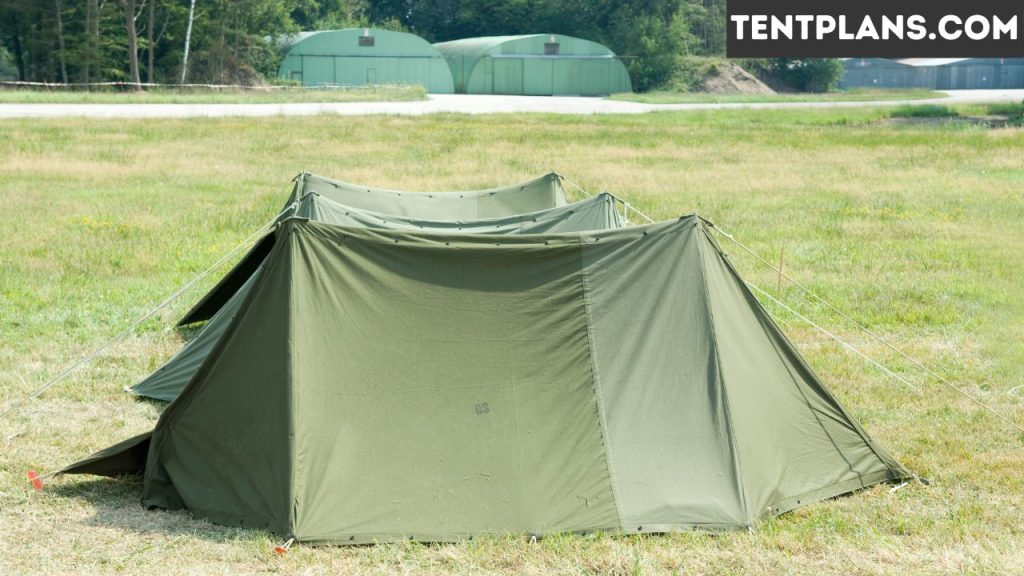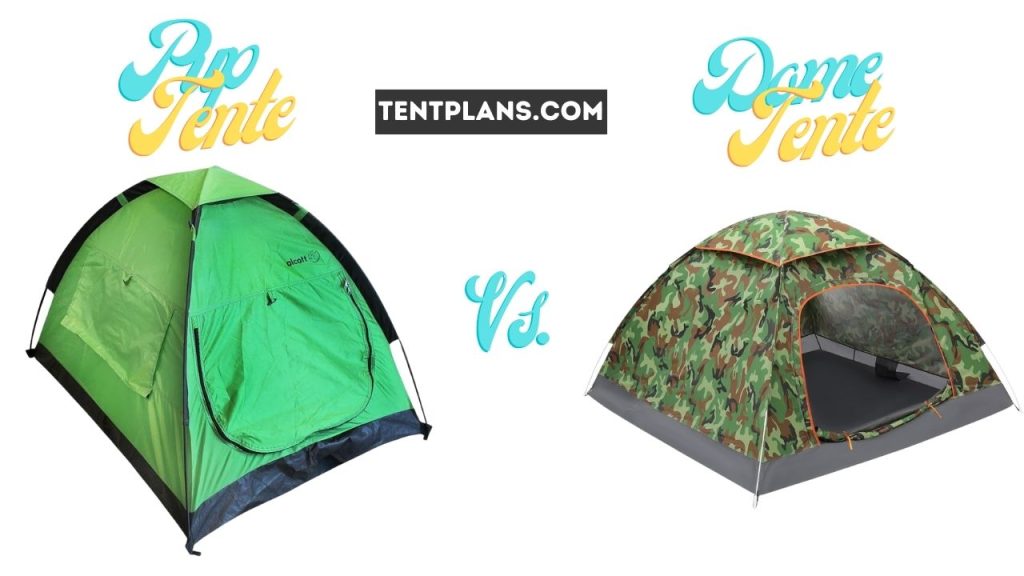A pup tent is a basic form of the tent, which is also called a shelter-half. The ten’s structure and design are super simple and very popular among hikers. Typically, this type of tent is used for temporary shelter.
Pup tents are small in size and easy to transport in a backpack. Moreover, it is the traditional tent of the military. But how did this tent originate? And why is it called a pup tent? To satisfy your curiosity, we have described a brief history of this pup tent and also added a relevant question-answer at the end.
Contents
What does pup tent mean?
Pop test staples of various sizes can be seen – usually, it is big enough for one or two adults. The best pup tent dimension is approximately 6 ft long, 4 ft wide, and 3.5 ft high, but at present, you may find various types of pup tents.
Assembling the pup tent is very straightforward. The structure is made with some durable material. You need a canvas and two poles to set the pup tent. One pole’s size is larger than the other pole. The larger pole is placed on the front and the smaller one on the back. By placing the poles, it gives the tent an A-shape appearance.
The traditional pup tents did not have waterproof material which became a bad dream in the rainy season. However, the modern pup tent includes a waterproof surface to keep you dry during rain.
Basically, the pup tent is named because the size is small and less capacity. Kids often make the pup tent for dogs. If you are alone out for an adventurous trip, then you can use a pup tent for camping. You can individually set the shelter with ease and being lightweight, you can carry with efficiency. It is not an ideal choice for family camping. Pup tents are often carried by soldiers, trainees, mountaineers, campers, or in any outdoor activity.
Why Is It Called A Pup Tent?
There are many narratives behind the name of the pup tent. One of them was that in the American Civil War, soldiers commonly stated the dog word as slang, and referred to dog words as their personal accessories. When soldiers entered or out of the small tent by crawling, it gave a dog-like feel. From then, the tent was called a pup tent.
Theories on the Origin of the “Pup Tent” Name
Resemblance to Doghouses
One of the most common theories is that the small tents gained the nickname of “pup tents” because they physically resembled a type of crude doghouse or shelter that might be used for a puppy, which was typically very small and low to the ground. The tents had a similar size and stature.
Soldier Slang – “Pups”
Another related theory stems from soldier slang. New recruits and inexperienced soldiers were sometimes referred to as “pups” by veterans. Since these small two-man tents were used to house new recruits, usually with two soldiers per tent, they became known as “pup tents.”
Additionally, the cramped conditions and basic shelter provided by these tents were seen as only suitable for dogs. The small size was akin to the type of crude accommodation that only a mutt or stray would rely on. So soldiers began calling them “dog tents”, which evolved into the pup tent moniker.
High-Pitched Assembly Sounds
There is also a theory that the sounds produced when erecting the tents – the metal and wooden components and canvas fabric – reminded soldiers of excitable puppy noises. The rattling and shuffling racket sounded like a lively litter of puppies at meal time. So troops found the name “pup tent” fitting based on theAudio when assembling them.
While the exact origin is unknown, these theories on how the portable two-person tent became known as the “pup tent” all stem from the appearance, size, conditions, or sounds associated with dogs or puppies.
History of pup tents

The pup tent was first structured by military troops and oriented throughout the American Civil War. During battle ground, soldiers mostly walked to go from one place to another and they carried their own stuff. So they took the pup tents for their temporary shelter and easily carried the tent’s lightweight equipment.
The military pup tent is a bit wider than the regular one as it is assigned to be a two-soldier tent. The tent weighed about 10 pounds including the pegs and poles. Two soldiers shared the weight equally so that they could carry other gears too.
At the first stage of the pup tent, there wasn’t a front flap and didn’t equip water-resistant elements. So the soldiers were open to the weather. Later, during World War 2, the pup design had been improved and combined the flaps and better water-resistant pegs. This design is followed in most armies’ camps across the world.
While Major Livermore helped pioneer the initial idea for the portable shelter in the 1860s, the design, durability, and ease of use of pup tents continued to be improved into the early 20th century. Here are some key evolutionary milestones in the development of the iconic pup tent:
| Year | Evolution |
|---|---|
| 1909 | U.S. Army begins mass production of standardized pup tents using tented ridge poles vs. wooden poles for support. This tent becomes the standard issued shelter for every American soldier through WWI and WWII and is widely mass produced and used. |
| 1940s | Water-repellent fabrics introduced along with zipper closures for quicker setup. |
| Vietnam War Era | Hammock and jungle-style tents gain favor reducing reliance on ground pup tents. Synthetic lightweight fabrics enter use. |
| 1970s – present | Commercial interests help further improve ease of use with innovations like color-coded poles, pop-up tent frames, staking systems, and “instant” setup options. |
While initially born out of necessity during earlier wars, the pup tent – especially the modern two-person backpacking tent – has now fully shed its military origins. Today’s portable tents offer hardy and lightweight protection for recreational campers and wilderness explorers who still benefit from and appreciate Livermore’s practical portable shelter concept.
Table: Key Pup Tent Design Milestones and Improvements
This table summarizes the incremental developments that improved upon Livermore’s initial 2-man tent concept over 150+ years:
| Innovation | Benefit |
|---|---|
| Ridge pole support | Added durability and ease of assembly |
| Machine sewing | Improved water resistance and tent lifespan |
| Water-repellent canvas fabrics | Keep occupants and gear drier |
| Zippered doors and windows | Quick access and better ventilation |
| Synthetic fabrics (nylon) | Lighter weight and even greater waterproofness |
| Color-coded pole clips | Simplify matching of correct poles; speed setup |
| Curved tent corners | Increase usable interior space |
From the American Civil War through WWI, WWII and the Vietnam War all the way up to sophisticated modern tents, the basic pup tent concept has been used and adapted to serve needs of both soldiers and civilians today.
What is the difference between a pup tent and a dome tent?

A pup tent is an A-shaped tent and a dome tent appears in a dome shape. Including shape, there are many differences in capacity, applications, stability, and installation method. Below we will compare the common difference between pup tents and dome tents.
| Feature | Pup Tent | Dome Tent |
|---|---|---|
| Structure | Typically two A-frame style poles connected by a ridge line create angled sides | Curved external frame poles create more rounded dome shape |
| Height | Usually quite low, around 3 feet tall; sleepers press against sides | Taller center peak height, around 4 ft; more livable interior headroom |
| Weight | Very lightweight at 2-5 lbs total; built for portable backcountry use | Heavier at 5-10 lbs; prioritize space over portability |
| Livability | More cramped due to low ceiling; mainly just for sleeping | Higher peaks and near-vertical walls create more interior space for moving around |
| Weather resistance | Can withstand wind and rain thanks to low profile | Vulnerable in high winds; dome structure can catch gusts |
| Cost | Less expensive at $100 – $200 price range | Higher quality materials and engineering raise costs closer to $250 – $400 |
- Shape:
The common difference between these two domes is the shape that you can see at one glance. The pup tent has a triangle shape and the dome shape has a semicircle shape. Typically, the most traditional pup tent does not have a footprint but the modern pup tent includes the footprint. If you don’t have the footprint, you need to add a third-party footprint to separate yourself from the floor.
There is a difference in central height where you can see the pup tent has a higher volume on the front, and the dome has a bigger volume inside. As the dome has a higher volume inside it gives more storage quantity.
- Capacity:
Typically, the pup tent has a smaller area and is suitable for one or two persons. For individual camping, you can pick this kind of tent. In case if you go with your pet, you may choose a smaller pup tent.
The dome tent gives a wider area than the pup tent. So it is undoubtedly ample for 1 or 2 persons as well as suitable for 4 to 5 persons. You will find some tents of every size. Bushnell shield series tent where you can make a reasonable selection. If you are going with your family, then a dome tent is the only option for family camping.
- Installation Process:
Always choose a tent for camping that is easy to set up. Many tents require a couple of people for only setting up the tent which also may be time-consuming. So it is adequate to choose a tent with simple installation.
Among these two tents, a pup tent is easier to set up. Usually, you will get all the gear with the package that needs to install and stabilize the tent. You can install it with a few instructions. As the pup tent requires a little hardware, the setup is relatively easy, and also lightweight to carry around.
The setup of the dome tent is quite complex from the other tent. Remember, in the larger dome tent; you go through more complexity. However, there are a few tents that come with simple instructions.
- Portability:
Portability is the major feature of a tent. When you look for a tent you must check its portability. This feature allows you to take the tent anywhere. A pup tent is a winner rather than a dome tent when you compare the portability. A pup tent is lightweight, easy to set up, and requires small equipment. So considering portability, you can take a pup tent for desert camping.
On the other hand, the dome tent has a bulky structure and heavier weight than a pup tent. Though the tent comes in its own backpack, it is less portable than the pup tent.
Frequently Asked Questions
- What shape is a pup tent?
A pup tent comes in a triangle shape. Two poles are used to make the mainframe then cover with durable pegs. You need guy lines, and stakes to secure the construction. The modern pup tent includes front flaps.
- Why use a Pup Tent?
In this modern era, the traditional pup tent design is outdated and those tents are not used anymore. A modern pup tent is much more durable and stable than earlier. When people go camping or hiking, these pup tents are used.
Conclusion
While conceived as portable shelters in the 1800s, the pup tent remains highly relevant for modern backpacking. The modest size aligns with principles of carrying only essential gear. The low weight and small packed size perfectly suit backcountry travel over mountain passes, technical trails, or countless miles where every ounce matters. Tested in past wars, pup tents still deliver reliable and inexpensive shelter ordinary citizens seek today.
So next time you unfurl your portable haven after a grueling day of wilderness miles piled on mountain passes, take a moment to appreciate the practical pup tent. Its simplicity and uncommon lightness submitting to the night descending around you – just as soldiers and explorers have century after century searching out their place of rest under star-strewn skies. In those minutes as you batten down the tent flaps against the winds, pay gratitude to the lasting essence of Major Livermore’s humble yet inspired canvas creation that helped bring sanctuary once again.

